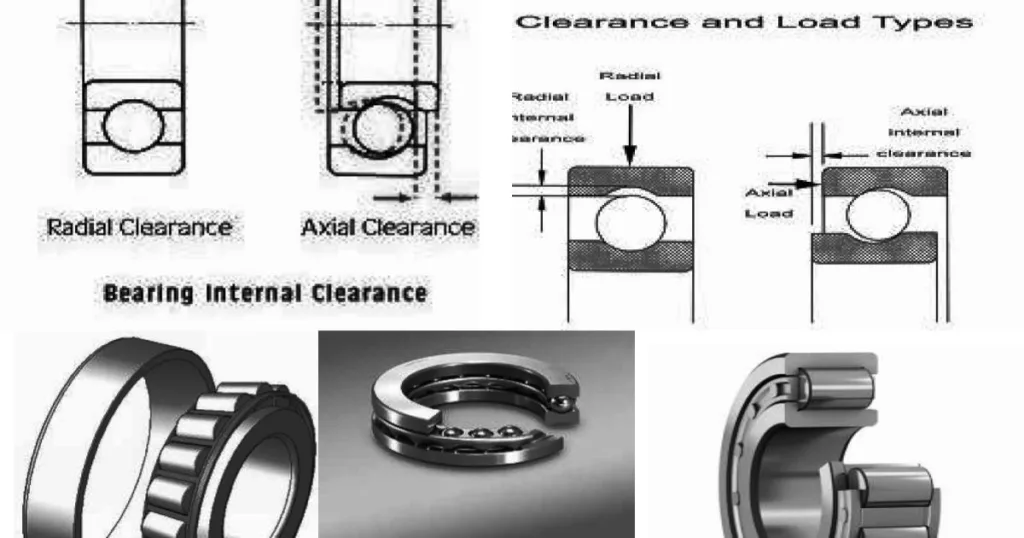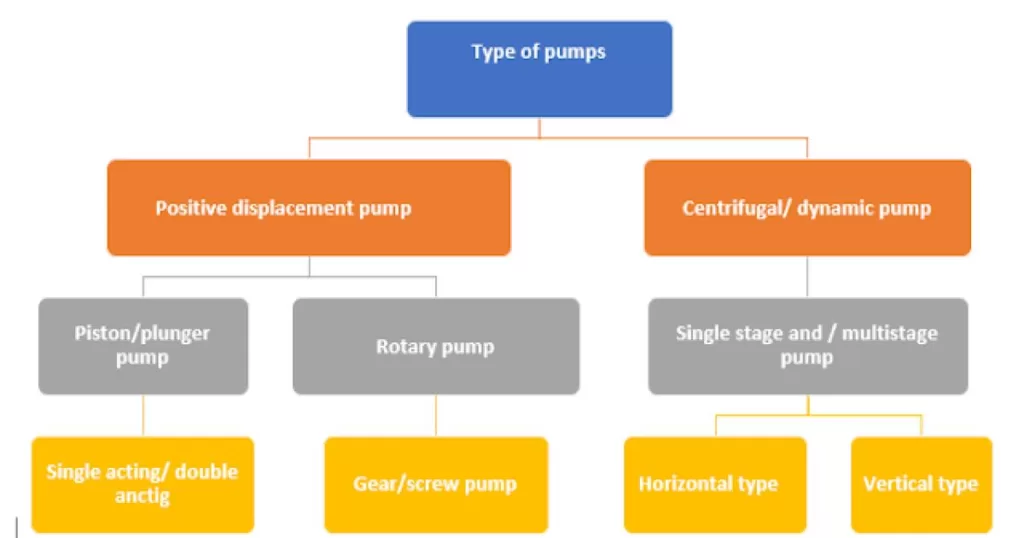Rolling Contact Bearing:
Rolling contact bearings are critical components in diverse mechanical systems, from cars to heavy-duty industrial machines. They minimize friction and enable smooth rotation, allowing parts to move efficiently. Their unique ability to handle both radial and axial loads while conserving energy makes them invaluable in modern engineering. This article delves into the fundamentals, types, working principles, and applications of rolling contact bearings.
Understanding Rolling Contact Bearings:
Rolling contact bearings are mechanical devices designed to reduce friction between moving parts. Unlike plain bearings, which rely on sliding surfaces, rolling contact bearings employ rolling elements that separate the bearing races and enable relative motion. This rolling action significantly reduces frictional losses and extends the life of the bearing.

Types of Rolling Contact Bearings:
Rolling bearings are essential components in countless machines, enabling smooth, efficient operation under various loads and speeds. But with diverse applications come diverse bearing types, each offering unique advantages. Understanding these variations empowers you to select the perfect rolling bearing for your specific needs.
- Ball Bearings: These versatile bearings, known for their low friction and high-speed capabilities, utilize spheres as rolling elements. They excel in applications with primarily radial loads.
- Cylindrical Roller Bearings: Offering high radial load capacity and moderate speed tolerance, cylindrical rollers provide exceptional rigidity and are suitable for applications like gearboxes and conveyor systems.
- Spherical Roller Bearings: Accommodating misalignment and handling a combination of radial and thrust loads, spherical rollers are ideal for applications experiencing shaft deflection or uneven loading.
- Tapered Roller Bearings: Renowned for their ability to handle both radial and thrust loads simultaneously, tapered rollers are the go-to choice for heavy-duty applications like automotive wheel bearings and industrial gear drives.
- Needle Roller Bearings: Offering the highest load capacity in a compact design, needle rollers are perfect for space-constrained applications with limited radial clearance.
Working Principles of Rolling Contact Bearings:
Rolling contact bearings are a cornerstone of countless machines, enabling smooth and efficient operation. These bearings function by utilizing rolling elements, such as balls or rollers, to separate moving parts. When a load is applied, these elements distribute the force evenly, minimizing stress concentration and promoting smooth rotation.
Minimized Friction, Maximized Performance:
A key advantage of rolling contact bearings lies in their ability to significantly reduce friction. As the inner race rotates, the rolling elements glide along specially designed raceways, minimizing contact area and frictional resistance. This translates to improved efficiency, reduced energy consumption, and ultimately, enhanced machine performance.
Lubrication: The Key to Longevity:
To ensure optimal performance and extended lifespan, proper lubrication is crucial for rolling contact bearings. Lubricants, in the form of grease or oil, play a vital role in minimizing friction, dissipating heat generated during operation, and preventing wear and corrosion. Regular maintenance practices, including adhering to recommended lubrication intervals, are essential for maximizing the life and effectiveness of these bearings.
Applications of Rolling Contact Bearings:
Rolling contact bearings are the workhorses of industry, supporting critical applications across diverse sectors. Their unique design, utilizing rolling elements between inner and outer races, minimizes friction and enables smooth, efficient operation. This translates to numerous benefits for various industries:
- Automotive: Rolling bearings play a vital role in automobiles, from enhancing fuel efficiency in transmissions to reducing wear and tear in wheel hubs and suspension systems.
- Industrial Machinery: In pumps, compressors, and other machinery, these bearings ensure smooth operation and minimize downtime, leading to increased productivity and cost savings.
- Aerospace & Defense: Demanding applications like aircraft engines and landing gear rely on rolling bearings for their exceptional durability and reliable performance under extreme conditions.
- Power Generation: From wind turbines to hydroelectric generators, rolling bearings facilitate efficient power generation by supporting the rotation of turbine shafts with minimal friction.
Interview questions on bearing
Combining Rolling Bearings for Optimal Equipment Performance
Selecting the right combination of rolling bearings is crucial for maximizing equipment efficiency and lifespan. This article explores three common arrangements: back-to-back (O), face-to-face (X), and tandem.
Back-to-Back (O) Arrangement:
- Increased Moment Load Capacity: The wider distance between the inner and outer cages in the O arrangement minimizes deformation under bending moments, enabling it to handle heavier moment loads compared to the X arrangement.
- Suitable Bearing Types: Both angular contact ball bearings and tapered roller bearings can be paired in O, X, and tandem arrangements. In the O arrangement, two bearings work together to accommodate combined radial and axial loads.
- Thermal Stability: Due to the opposing thermal expansion coefficients of the bearings and surrounding components, the O arrangement maintains consistent preload even during temperature fluctuations.
Face-to-Face (X) Arrangement:
- Preload for Thermal Expansion: The X arrangement is ideal for applications where shaft heating is a concern. Preloading the bearings during mounting helps mitigate thermal expansion-induced damage.
- Alignment Tolerance: The X arrangement offers some tolerance for misalignment in the housing and shaft deflection due to insufficient rigidity.
Tandem Arrangement:
- High Load Capacity: Primarily used for low-speed applications with substantial loads, the tandem arrangement features two bearings positioned sequentially on the shaft to handle significant radial forces.
Choosing the Right Arrangement:
The optimal arrangement depends on various factors, including load type, speed, thermal considerations, and shaft rigidity. Consulting with a bearing specialist is recommended to ensure the most suitable arrangement for your specific application.
What is cage bearing and full complement bearing?
Here’s a breakdown of cage bearings and full complement bearings:
Cage Bearing:
- Standard design: This is the most common type of rolling element bearing.
- Cage (separator): It features a separator ring that spaces and guides the rolling elements (balls or rollers) inside the bearing.
- Benefits:
- Reduced friction: The cage prevents metal-to-metal contact between the rolling elements, minimizing friction and wear.
- Higher speeds: The cage allows for smooth and stable operation at higher speeds.
- Easier lubrication: The cage helps distribute lubricant evenly among the rolling elements.
- Drawbacks:
- Lower load capacity: Compared to full complement bearings, they can accommodate fewer rolling elements, resulting in a slightly lower load capacity.
Full Complement Bearing:
- No cage: This type of bearing eliminates the cage entirely, allowing for the maximum number of rolling elements to be packed within the bearing.
- Benefits:
- Higher load capacity: By packing more rolling elements, they can handle significantly higher loads compared to cage bearings.
- Shock resistance: The increased number of rolling elements enhances their ability to absorb shock loads.
Drawbacks:
-
- Higher friction: The absence of a cage leads to increased friction between the rolling elements, requiring more frequent lubrication and potentially generating more heat.
- Lower speed limitations: Friction and potential heat generation limit their suitability for high-speed applications.
- Complex assembly: Filling the bearing with the maximum number of elements can be challenging and requires specialized techniques.
Q1. What is a rolling contact bearing?
A rolling contact bearing is a type of bearing that utilizes rolling elements such as balls or rollers to reduce friction between moving parts and support radial and axial loads.
Q2. How does a rolling contact bearing work?
Rolling contact bearings work by using rolling elements, such as balls or rollers, that roll between inner and outer races to reduce friction and support loads. This rolling motion allows for smoother operation compared to sliding contact bearings.
Q3. What are the advantages of rolling contact bearings?
The advantages of rolling contact bearings include reduced friction, which leads to lower energy consumption and less heat generation, as well as higher load carrying capacity and longer service life compared to sliding contact bearings.
Q4. What are the different types of rolling contact bearings?
Common types of rolling contact bearings include ball bearings, roller bearings (such as cylindrical, tapered, and spherical roller bearings), and needle bearings. Each type has its own unique design and applications.
Q5. How do I choose the right rolling contact bearing for my application?
To choose the right rolling contact bearing for your application, consider factors such as load requirements, operating conditions (such as speed and temperature), mounting space, and desired maintenance level. Consulting with a bearing specialist can also help ensure you select the most suitable bearing for your specific needs.
Types of Bearing internal clearance
Bearing Internal Clearance
Internal clearance in a bearing is the space between the rolling elements and the bearing races. It is an essential parameter that affects the bearing’s performance,寿命, and noise generation. The appropriate clearance is crucial for proper lubrication, minimizing friction and wear, and accommodating thermal expansion.
There are two main types of bearing internal clearance:
- Radial internal clearance: This is the space between the inner and outer races in the radial direction, measured perpendicular to the bearing’s axis.
- Axial internal clearance: This is the space between the inner and outer races in the axial direction, measured along the bearing’s axis.
- C0: Normal clearance (standard for most applications)
- C2: Smaller than normal clearance (used for high-speed applications or applications with tight tolerances)
- C3: Larger than normal clearance (used for applications with low-speed, high-temperature, or shock loads)
- C4: Even larger than C3 clearance (used for very low-speed applications or applications with significant shaft deflection)
- C5: Largest clearance (used for very low-speed applications with extreme misalignment or heavy shock loads)
List of radial load bear bearing
- Ball Bearings
- Roller Bearings
- Cylindrical Roller Bearings
- Spherical Roller Bearings
- Tapered Roller Bearings
- Needle Roller Bearings
- Thrust Bearings
- Ball Thrust Bearings
- Roller Thrust Bearings
- Angular Contact Bearings
- Self-aligning Bearings
List of Axial load bear bearing
- Thrust ball bearings
- Thrust roller bearings
- Tapered roller thrust bearings
- Cylindrical roller thrust bearings
- Spherical roller thrust bearings
- Angular contact thrust ball bearings
Identification Code for bearing
When it comes to identifying bearings, understanding the intricate combination of letters and numbers in their nomenclature is essential. A bearing code typically comprises three components: a prefix, a basic code, and a suffix.
Prefix:
In bearing nomenclature, there exist four distinct prefixes:
- R: Indicates a ring of cylindrical or taper roller bearing featuring rolling elements and a cage, yet the ring is not separable.
- WS: Denotes the ring and ball of a thrust ball bearing.
- GS: Represents a housing washer of a thrust ball bearing.
- K: Signifies a cage with rolling elements, guiding the code of the bearings.
Suffix:
The suffix component of a bearing code provides additional specifications:
- E: Indicates a high capacity bearing.
- UA, UO, and UL: Stand for universal design of single row angular contact ball bearing with closed axial preload, no clearance, and light preload respectively.
- ZR and 2ZR: Denote bearings with one or two shields.
- RSR and 2RSR: Signify bearings with one or two shields.
- J, Y, M, F, L, T, and TV: Represent different cage materials such as pressed steel, pressed brass, machined brass, machined light alloy, and plastic.
- K: Specifies a bearing with a taper bore, with a taper ratio of 1:12.
- PN (PO), P6, P5, P4, P2: Indicate tolerance classes.
- C1, C2, CN(CN), C3, C4, and C5: Represent various levels of bearing clearance.
To determine the inside bore, multiply the last two digits by 5. If the diameter (d) is 10, 12, 15, or 17, the code number will be 00, 01, 02, or 03 respectively. If d exceeds 480 mm, it is directly inscribed on the bearings.



